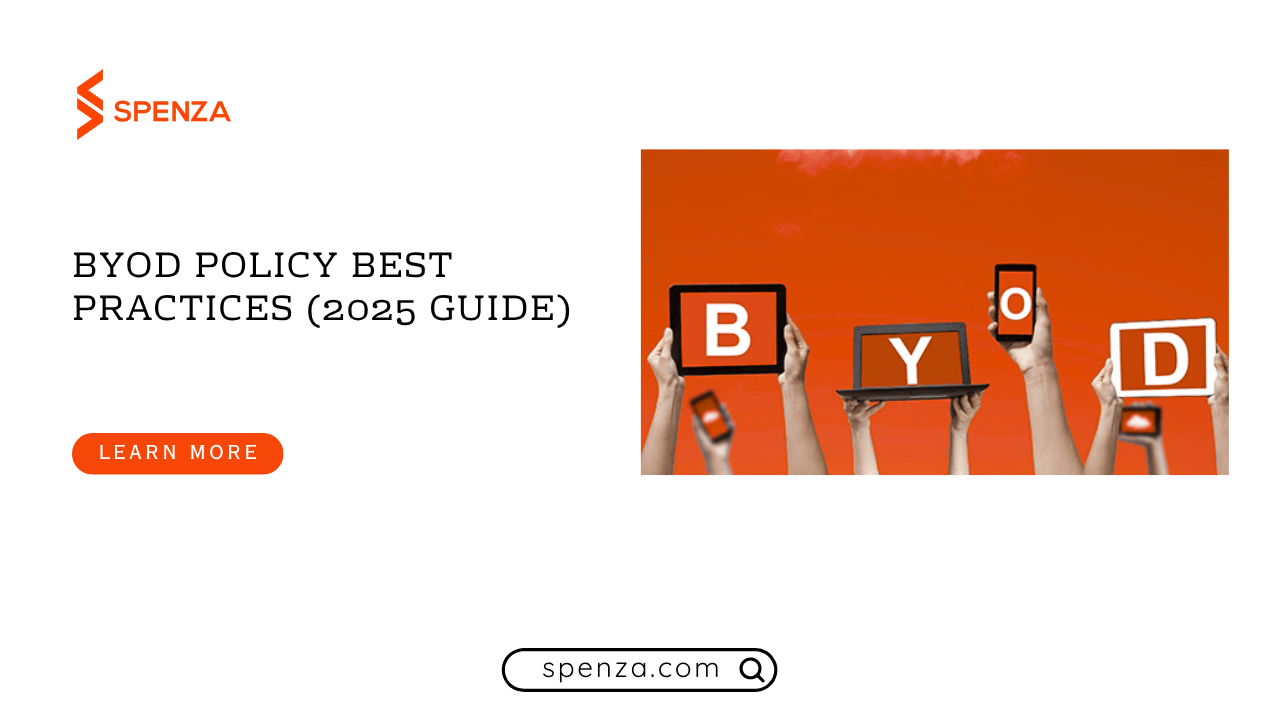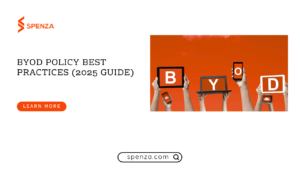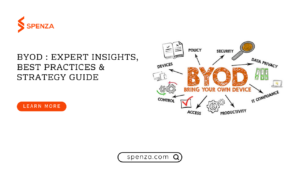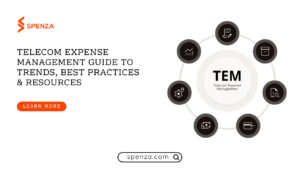
BYOD policy best practices in 2025 combine cost savings, security, and employee experience. With 82% of companies using BYOD, leaders must manage programs smartly using clear policies, corporate eSIMs, and real-time data visibility to protect networks while empowering workers.
Introduction: BYOD Isn’t New, But Doing It Right Has Changed
Every company now faces one clear truth: employees work on their own devices. Almost 90% of workers use personal phones or laptops for office tasks, and 82% of organizations have formal BYOD setups. BYOD benefits and risks grow together. Earlier in the 2020s, BYOD meant convenience. Today it means responsibility.
Across India, the US, and Europe, BYOD is no longer a novelty; it’s the foundation of hybrid work. Yet many companies still rely on ad-hoc BYOD policies built for a different decade. The big question for 2025 is straightforward: how do we capture the benefits of BYOD and mitigate the risks without compromising security or trust?
This guide breaks down modern BYOD policy best practices, based on real data and current research. It demonstrates how companies can secure devices, control costs, and manage BYOD programs that benefit IT, HR, and Finance. In this blog, you’ll find clear steps to design a BYOD security policy that fits 2025.
The Benefits: Why BYOD Remains a Powerful Strategy
When done well, BYOD turns into a growth engine. Let’s see why it still matters so much.

1. Boosts Productivity and Satisfaction
People work better on devices they know. That’s a fact. Research shows 68% of companies see higher productivity when employees use personal devices. On average, a BYOD user logs about two extra hours of work daily because work apps are a tap away.
This comfort also builds loyalty. About 56% of employers say BYOD boosts employee happiness and retention. When work feels less restrictive, engagement rises.
- Employees choose their own tools.
- Productivity improves because they avoid switching devices.
- IT teams see fewer support tickets for hardware issues.
The result is a faster, happier workplace. To make this sustainable, companies must use strong BYOD policy best practices that define access, security, and support.
For planning details, Spenza’s BYOD Planning guide shows how to set clear productivity targets without adding security risks.
2. Significant Cost Savings
Money matters. BYOD reduces hardware spending dramatically. Firms save around $300–$350 per employee each year, and Samsung data shows an average saving of $341 per person. That’s a big deal for Finance leaders looking to cut capital spend.
Let’s say you run a 500-person company. A BYOD program can save more than $150,000 annually in device costs alone. Those funds can move to training or security.
Savings don’t end there. Fewer devices mean:
- Less procurement time.
- Smaller repair budgets.
- No depreciation on hardware assets.
When teams manage BYOD programs properly, they also avoid carrier lock-ins by using corporate eSIM for BYOD. This lets a business switch mobile plans quickly and cut roaming bills globally.
To see how telecom cost control fits into your policy, check Spenza’s TEM overview.
3. Reduces IT Burden
IT departments spend countless hours deploying and fixing corporate devices. With BYOD, those hours drop fast. Instead of handling hardware, IT manages policies and security software.
Yet there’s a catch. Without oversight, BYOD can create chaos. Reports show 70% of BYOD devices still run outside any management system. That’s a serious BYOD security policy gap.
Modern tools like Mobile Device Management (MDM) and Mobile Application Management (MAM) solve this. They let IT enforce passwords, install updates, and remotely wipe company data. The result is a controlled BYOD environment without extra hardware stress.
The BYOD Policies resource explains how policy clarity reduces support burdens and keeps IT focused on growth tasks.
4. Encourages Innovation
Employees often own newer, smarter devices than their company would issue. That means faster processors, better cameras, and new apps. BYOD lets innovation flow organically without new budgets.
When teams use the latest tech, they spot opportunities faster. They adopt AI apps, remote collaboration tools, and mobile productivity software months before IT rollouts.
This freedom only works if a BYOD policy best practice defines secure boundaries. A clear BYOD security policy ensures that innovation doesn’t risk data leaks.
Check how a strong mobility framework supports this balance in Spenza’s Mobility Policy guide.
BYOD Benefits Snapshot
| Category | 2025 Data & Stats | Business Impact |
|---|---|---|
| Productivity | 68% see higher output | ≈ 2 extra work hours daily |
| Employee Satisfaction | 56% happier staff | Better retention |
| Cost Savings | $341 per employee | Lower hardware spend |
| IT Efficiency | 70% less device load | More time for strategy |
The Risks: What You Must Address in Your 2025 BYOD Policy
Every benefit has a mirror risk. Knowing them helps craft strong BYOD policy best practices.

1. The Security Nightmare
Security remains the top threat. When devices sit outside corporate control, so does your data. Nearly 48% of organizations faced breaches from unsecured personal devices last year. Worse, over 90% of lost devices caused unauthorized data access.
That’s why a modern BYOD security policy must enforce device encryption, MFA, and network filters. Zero-trust principles work best: trust no device until verified.
Hybrid teams connect from anywhere, and 22% of BYOD devices join unsafe Wi-Fi networks every month. This single stat shows why security starts with education and mobile policy tools.
Transitioning from awareness to execution, companies must use technology that controls connectivity without invading privacy, something corporate eSIM for BYOD helps achieve brilliantly.
2. Privacy Concerns
Employees fear surveillance. They want freedom without giving IT access to personal photos or messages. This is a major trust barrier.
A balanced BYOD security policy solves it through containerization. It keeps corporate apps in a secure, encrypted zone and leaves personal data untouched. That’s why modern BYOD policy best practices always include clarity on what IT can see and control.
Transparency builds trust. When employees know their privacy is safe, adoption of BYOD soars.
3. Inconsistent Support
IT helpdesks often struggle to support hundreds of device models. A BYOD program without limits creates frustration and cost overruns.
A policy should list approved devices and minimum OS versions. That way, support teams avoid unmanageable complexity. BYOD policy best practices recommend allowing devices no older than three years to keep security features current.
Automation also helps. IT can push updates and enforce security standards through MDM systems, reducing manual support.
4. Reimbursement and Fairness
Money conflicts break BYOD trust. Who pays for work data on a personal plan? About 69% of companies reimburse employees for mobile usage. Average monthly payments range from $55 in small firms to $80 in large ones.
Yet many companies still lack clear tracking methods. That’s where BYOD policy best practices must standardize rules for allowances, corporate eSIM usage, and auditing.
A transparent reimbursement framework keeps finance and employees aligned. It’s fair, predictable, and easy to manage when linked with tools like Spenza’s mobile plan marketplace.
Best Practices for a Modern BYOD Program
Now let’s move from problems to solutions. These BYOD policy best practices reflect what works today.
1. Create a Clear and Comprehensive Policy
Every BYOD initiative starts with rules. Write them down. Define who qualifies for BYOD, which devices are approved, and what apps count as business tools. State the BYOD security policy requirements, like passwords, MFA, and lost device actions.
Explain acceptable use. Can employees access corporate email on personal phones? Are social apps allowed when connected to the VPN? Clarity prevents confusion and data leaks.
Make every employee sign the policy. Awareness reduces breaches. Remember, a policy is only as strong as its enforcement.
2. Separate Work and Personal Data with Technology
Security and privacy depend on separation. Use MDM or MAM to create two spaces on one device, personal and corporate. The work profile stores email, files, and VPN access in an encrypted container.
If a device is lost, IT can wipe corporate data without touching personal content. This simple separation builds trust and keeps compliance with laws like GDPR and HIPAA.
BYOD policy best practices also recommend automatic updates and remote locks for non-compliant devices. This turns BYOD into a controlled ecosystem, not a security risk.
Transitioning from device management to connectivity management, companies increasingly use corporate eSIM for BYOD to control data traffic securely and avoid mixing personal and work usage.
3. Implement a “Corporate eSIM” for Connectivity
This is the biggest shift in 2025 BYOD policy best practices. Corporate eSIM for BYOD changes how companies pay for and control mobile data.
Instead of stipends or expense claims, IT pushes a corporate eSIM profile onto an employee’s personal phone. The company owns the data line while the personal SIM stays private. It’s clean, fair, and secure.
Benefits include:
- Clear separation of corporate and personal usage.
- Automatic cost control and analytics.
- Easy activation for remote teams through API-based provisioning.
This method also reduces roaming costs for global workers and supports multi-carrier plans. It’s one of the most efficient ways to manage BYOD programs at scale.
Spenza’s Enterprise eSIM BYOD page explains how corporate eSIM integration simplifies BYOD deployment and security.
4. Establish a Fair Reimbursement Program
Not### 4. Establish a Fair Reimbursement Program (continued)
BYOD only works when the financial side feels fair. Every employee using personal devices for work deserves transparency on what the company covers. The best BYOD policy best practices set clear reimbursement rules.
Define what’s reimbursed: mobile data, device wear, or just work calls? Keep the structure consistent for everyone. Research shows 69% of organizations already reimburse mobile use, with average payouts between $55 and $80 per month depending on company size. Those numbers keep employees motivated while controlling overall costs.
To manage BYOD programs fairly, link reimbursements to measurable usage. That’s where data analytics or corporate eSIM for BYOD systems help, tracking work data usage automatically. This method reduces manual claims and eliminates disputes about bills.
Transparency and consistency make employees trust the system, and finance teams get predictable costs each month. It’s a win-win that strengthens long-term BYOD success.
Bringing It Together
At this stage, a pattern appears. Successful BYOD programs blend clarity, technology, and accountability. The same company that documents its policy, secures devices, separates data, and fairly pays employees will always outperform one that doesn’t.
Building such a system takes planning, not guesswork. The right tools and processes help teams protect data, simplify costs, and support employees worldwide. This is where technology partners like Spenza transform theory into action.
How Spenza Modernizes Your BYOD Program
Implementing every best practice sounds simple until you start scaling globally. Different carriers, countries, and reimbursement rules make BYOD management complex. That’s where Spenza steps in to simplify operations, reduce costs, and enhance data security.
Spenza is a modern MVNE built for the next era of connectivity. Its cloud-native, API-first platform supports both traditional MVNOs and IoT deployments while providing everything needed to manage mobility, SIM provisioning, billing automation, analytics, and carrier control. In short, it gives IT and finance leaders one place to manage BYOD programs efficiently.
Seamless eSIM Provisioning
A big part of modern BYOD policy best practices is adopting corporate eSIM for BYOD. Spenza makes this seamless. Instead of relying on manual SIM swaps or expense reimbursements, you can push a corporate eSIM profile directly onto an employee’s device, within minutes.
This keeps personal and business data separate. The corporate line handles company apps, VPNs, and work data, while the employee’s personal SIM remains untouched. This approach supports data privacy and compliance, solving one of the biggest BYOD benefits and risks issues businesses face.
With Spenza, you also get multi-carrier coverage across 190+ countries, making it perfect for distributed teams. Remote employees can connect instantly to the strongest available network, no matter where they work. That’s BYOD policy best practices meeting global mobility.
Accurate Allowance and Reimbursement Tracking
A strong BYOD program must also handle costs transparently. Instead of processing individual expense reports, Spenza’s analytics automate the process.
Through detailed usage analytics, companies see exactly how much corporate data each eSIM consumes. This makes reimbursements precise and fair. Finance teams can assign monthly budgets or real-time limits for different roles.
For example, one firm using Spenza cut its mobile spending by nearly 50% compared to traditional enterprise plans. By integrating policy automation and analytics, businesses gain the visibility they need to control telecom costs and reimburse employees accurately.
This is how modern tools turn BYOD cost savings into ongoing operational efficiency. It also aligns perfectly with BYOD policy best practices that emphasize fairness and transparency.
Network-Level Security Enforcement
BYOD security policy cannot depend solely on users. Spenza helps companies enforce protection at the network level.
When traffic flows through the corporate eSIM, IT can apply rules directly, blocking unsafe sites, filtering content, and ensuring data passes through approved VPNs. This turns every employee connection into a secure, monitored channel without invading personal space.
If a device gets lost or compromised, IT can instantly suspend its corporate eSIM. That means no waiting, no data leakage, and full compliance with privacy laws.
These capabilities make Spenza a core enabler of the BYOD policy best practices outlined earlier, secure, cost-effective, and easy to scale globally.
Why Spenza Fits the 2025 BYOD Standard
In 2025, companies need more than telecom providers, they need connected ecosystems. Spenza brings everything together:

- Integrated SIM and eSIM management for both corporate and personal device programs.
- Custom billing engines that automate reimbursement and usage tracking.
- Global carrier management tools that support 190+ regions seamlessly.
- Data analytics that empower IT, HR, and Finance to make informed decisions.
From onboarding to reimbursement, Spenza eliminates the friction in managing BYOD programs. It lets you apply all your BYOD policy best practices in one connected platform.
For example, HR can control policy compliance, IT can track device security, and Finance can forecast telecom budgets, all within Spenza’s interface. That’s real-time mobility intelligence.
If you want to explore this transformation, you can start by visiting Spenza’s BYOD page.
Conclusion: The Smart Way to Do BYOD in 2025
BYOD isn’t a future trend anymore; it’s the present reality. 82% of organizations now operate with BYOD frameworks, and that number keeps growing. The next phase isn’t about allowing personal devices; it’s about controlling them intelligently.
A strong policy balances freedom and control. BYOD policy best practices in 2025 must combine three principles:
- Security through clear access control, MDM tools, and corporate eSIM.
- Fairness through transparent reimbursements and data-driven analytics.
- Flexibility that respects employee privacy and productivity.
Modern tools like Spenza make this practical. They merge cost management, connectivity, and security into one system, turning BYOD benefits and risks into measurable outcomes.
Companies that manage BYOD programs proactively will see the best of both worlds: higher productivity, lower costs, and protected data. The time to refine your BYOD security policy is now.
FAQs
Companies save about $300–$350 per employee yearly through BYOD cost savings. When scaled, it can reduce mobility expenses by up to 50%, especially with accurate tracking systems.
Yes, if you enforce a clear BYOD security policy. Using MDM, containerized apps, and secure eSIM connections reduces risks of malware, data leaks, and unauthorized access.
Corporate eSIM for BYOD separates business and personal data plans. It allows IT to monitor corporate traffic, ensure security compliance, and manage costs without touching personal data.
Yes, our platform is designed to integrate seamlessly with existing enterprise systems, including identity management, security tools, and productivity applications.
Spenza gives companies full visibility into BYOD usage. Its API-first platform supports eSIM provisioning, billing, and multi-carrier control across 190+ countries, making it easy to manage BYOD programs anywhere.
The top benefits include productivity gains, employee satisfaction, and cost savings. Risks include data breaches, inconsistent device support, and unclear reimbursement policies. Balancing these defines BYOD success.
Ready to modernize your BYOD program? Request a free demo to see how Spenza can slash costs, simplify connectivity and secure your mobile workforce.






